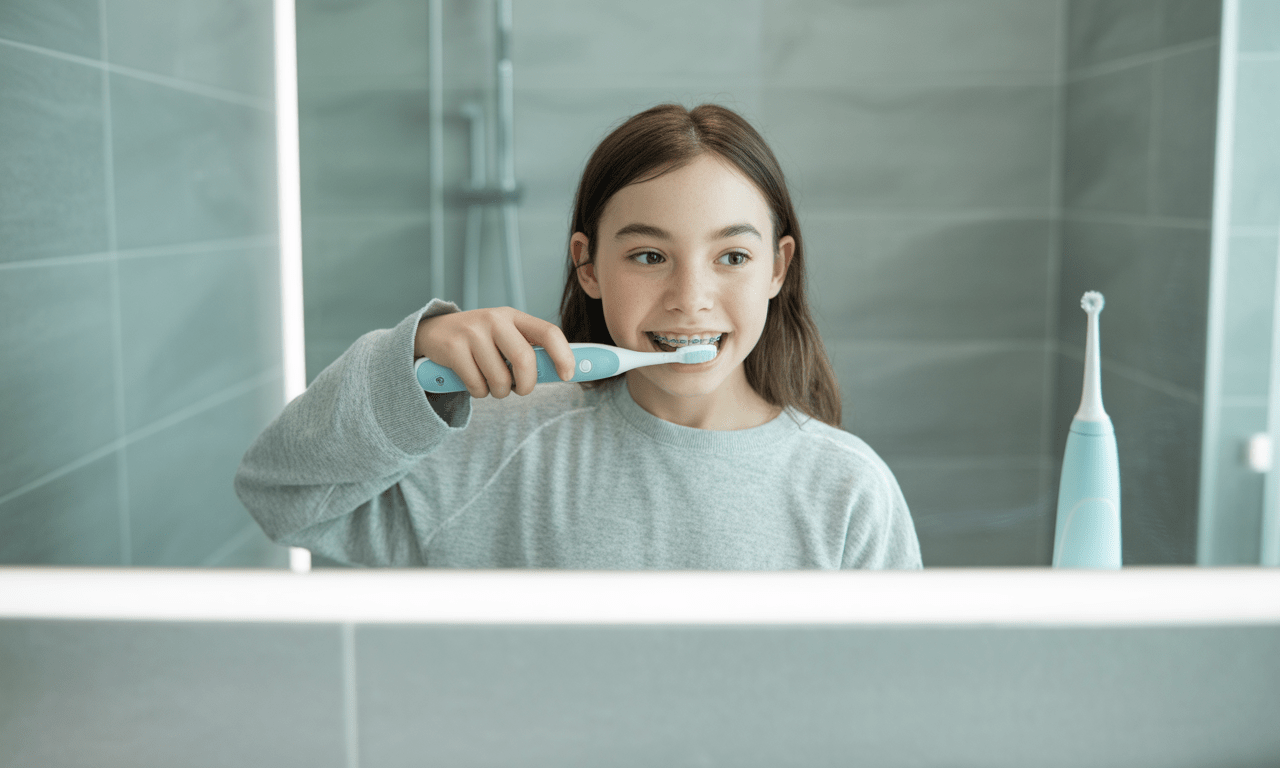
Braces are a powerful tool for achieving a straighter, healthier smile—but they also come with new hygiene challenges. Wires, brackets, and bands can trap food and make brushing more difficult, increasing the risk of cavities and gum disease. The key to a successful orthodontic journey is a consistent and effective oral care routine tailored to your braces.
TLDR: Quick Guide
- Brush after every meal using a soft-bristled toothbrush and fluoride toothpaste.
- Floss daily using threaders or water flossers to get around brackets.
- Rinse with an antibacterial mouthwash to control plaque.
- Avoid sticky, hard, and sugary foods that damage braces or cause decay.
- Visit your dentist and orthodontist regularly for cleanings and adjustments.
Why Oral Hygiene Is Critical with Braces
Braces create many tiny spaces where food particles and plaque can hide. Without proper cleaning, these areas can quickly lead to tooth decay, decalcification (white spots), and gum inflammation. Maintaining a disciplined oral care routine helps prevent problems that could delay your orthodontic progress or leave you with permanent enamel damage.
Step-by-Step Oral Care Routine for Braces
1. Brushing After Every Meal
Use a soft-bristled toothbrush or an orthodontic brush designed for braces. Hold the brush at a 45-degree angle above and below each bracket, brushing gently in small circular motions. Electric toothbrushes with ortho heads can also help ensure thorough cleaning.
2. Flossing Once Daily
Regular flossing is more difficult with braces, but it’s non-negotiable. Use floss threaders or orthodontic floss picks to navigate between wires and reach the gumline. Water flossers are also a great alternative, especially for patients with tight spaces or sensitive gums.
3. Rinsing with Mouthwash
A fluoride or antibacterial mouthwash adds an extra layer of protection against bacteria and plaque. Swish for 30 seconds after brushing and flossing to help prevent gum issues and strengthen enamel.
4. Interdental Brushes for Quick Cleanups
These small brushes slide easily between brackets and wires, helping remove debris between full brushings. Keep one in your bag for a post-lunch clean at work or school.
5. Avoid Problem Foods
Sticky, crunchy, and sugary foods can break brackets, loosen wires, or get trapped and increase plaque buildup. Minimize or eliminate things like gum, caramel, popcorn, and soda from your diet.
Routine Dental Visits Matter
Orthodontic check-ins aren’t a substitute for regular cleanings. See your general dentist every six months—or more often if recommended—to ensure plaque and tartar aren’t building up around your braces. Your dental hygienist can clean areas that are difficult to reach at home and spot early signs of trouble.
Key Takeaways
- Brushing and flossing are more important than ever with braces.
- Use tools like water flossers, interdental brushes, and fluoride rinses.
- Avoid food that damages or clogs your braces.
- Maintain regular cleanings to protect long-term oral health.
- A disciplined routine leads to faster, cleaner results post-braces.
FAQs
How often should I brush with braces?
Brush after every meal—ideally three times a day—and once more before bed.
What type of toothbrush is best?
A soft-bristled manual or electric brush with an orthodontic head is ideal for cleaning around brackets.
Can I use whitening toothpaste with braces?
Avoid whitening toothpaste during treatment—it can cause uneven color once braces are removed.
Do I still need professional cleanings?
Absolutely. Professional cleanings remove buildup you can’t reach at home and help monitor gum health.
What happens if I don’t keep my braces clean?
Poor hygiene can lead to cavities, gum disease, and white spots that remain after your braces come off.
